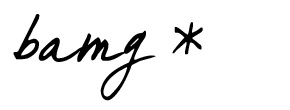The Labastide series is the culmination of a fortnight’s research and creation residency at Labastide d’Armagnac (40) in 2017 in Richard Freeth’s private workshop. Time was a real challenge because it was a question of producing, in two weeks, an residency exhibition. The practice of engraving usually requires a longer creation time. This constraint allowed Blandine Galtier to find other modes of production. The goal of this residence was to restore three plastic works in progress in the village: the renovation of the church, a private site, as well as the extension of the Town Hall. In addition to site machines and equipment (cranes, scaffolding), the artist has translated what his senses have perceived: the accumulation, the tangling of lines, the jerky noises (of the jackhammer), the textures… carborundum, drypoint on zinc and plastic were chosen for this purpose. Blandine Galtier also stopped on the gestures of the site: construction, dismantling, addition, for that she uses chine-collé and sets of caches, addition – subtraction which reveal and modify the previous impressions.
The first 4 matrices are created and are thus printed, superimposed, head to tail to end up with a monoprint (single piece). Forty prints are thus created.
Blandine Galtier chose different papers and in particular Wenzhou Chinese paper. It is at the same time fine, flexible and rough. It offers semi-transparency which creates a depth effect. This is accentuated by the overlays worked by the artist which reflect the density of information present on a site. Like the negative, it accumulates the data that must be dissected layer by layer.
The Labastide series is enriched with around fifteen prints, during the Dialogue with Elena Peinado exhibition at the Center of Contemporary Art of Landes de Mont de Marsan. This exhibition allows Blandine Galtier to continue the creative process established during the first series and to add new plaques to it. Labastide2 sees new data appear as if to go towards the exhaustiveness of a building typology.





